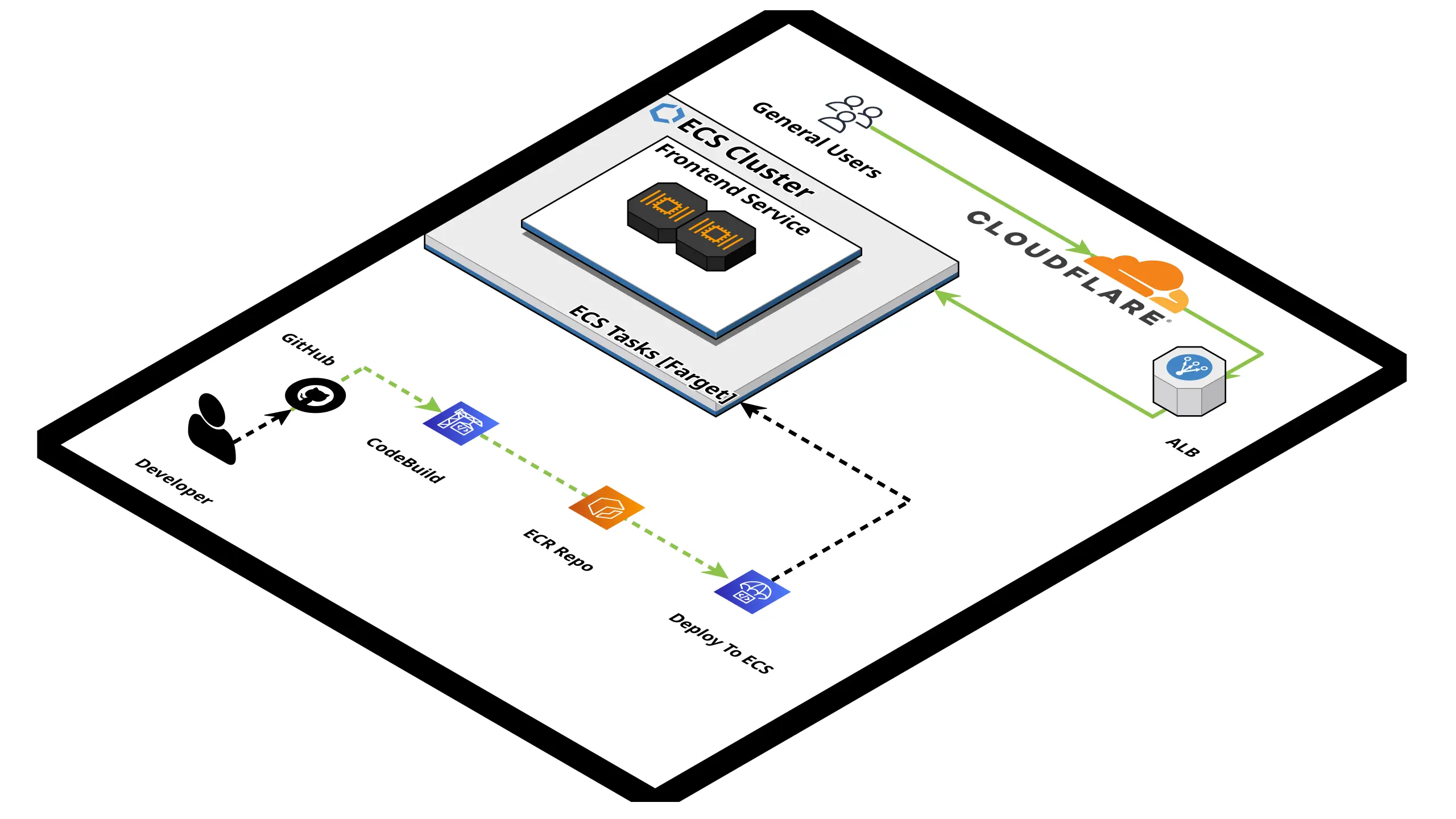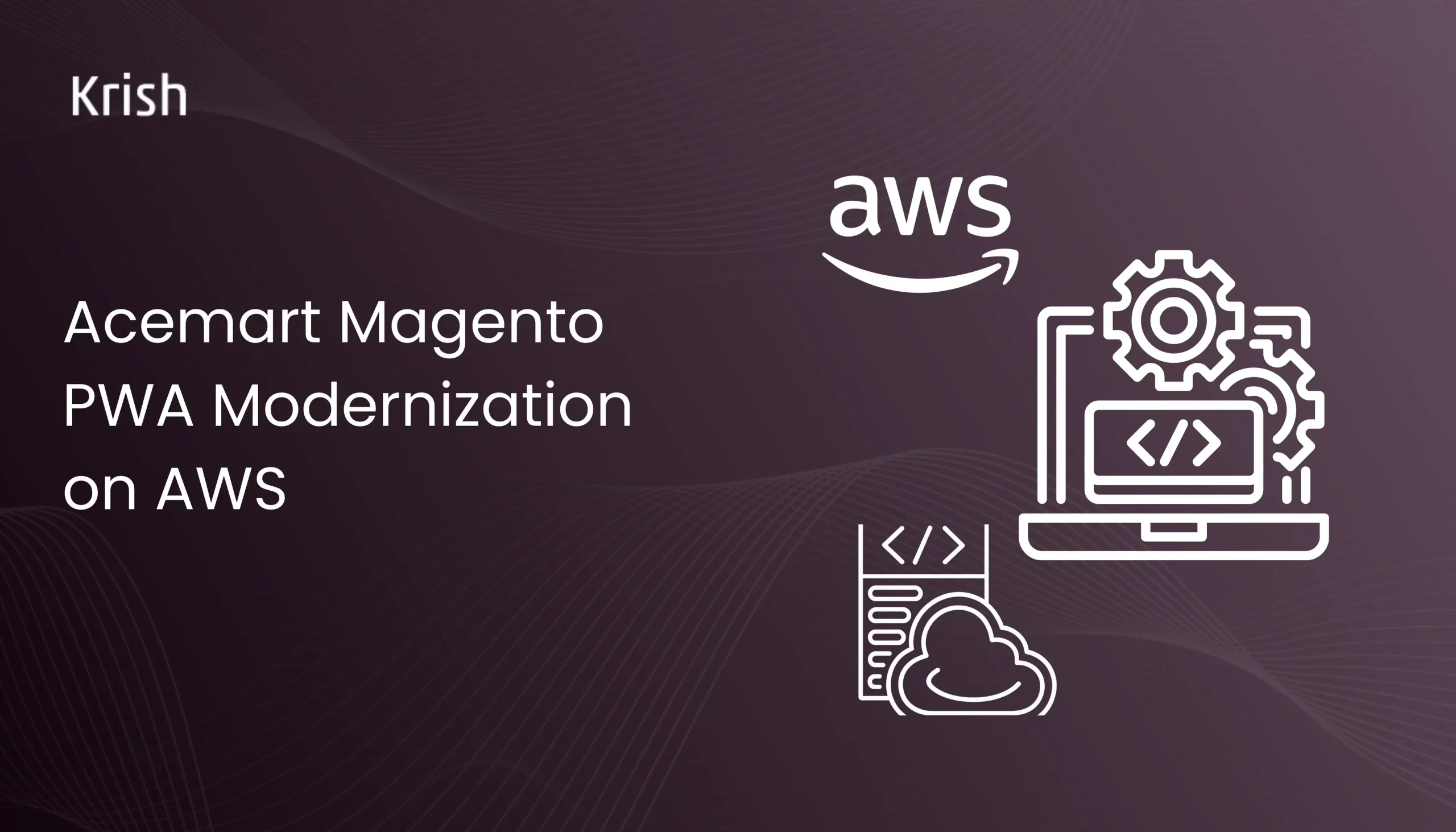
Introduction
eCommerce has become a race for speed, simplicity, and uninterrupted customer experience – especially for brands handling massive traffic volumes and rapid product discovery journeys. HNAK, one of the region’s leading online retailers, understands this reality better than most. Known for its emphasis on delivering fast, seamless shopping experiences, the brand needed an infrastructure that could not only keep up with demand but also evolve without operational friction.
Yet behind the scenes, their engineering team was spending an increasing amount of time maintaining compute resources, monitoring scaling patterns, and ensuring that their applications stayed responsive under pressure. Their existing EC2-based setup was functional, but not future-proof. As customer expectations rose and the platform expanded, the cracks in the underlying architecture became harder to ignore.
Partnering with Krish, HNAK set out to redesign their containerized application foundation—moving from a self-managed compute model to a fully serverless environment powered by AWS Fargate. The goal was clear: simplify operations, shrink deployment bottlenecks, and unlock a new level of performance.
The Hidden Challenges Slowing Down Performance
Even though HNAK’s platform was built to serve high-volume traffic, several infrastructure constraints were silently eroding performance and operational efficiency. The issues weren’t isolated—they were compounding:
- The platform relied on large monolithic Ubuntu-based images, which took considerable time to start and scale.
- Heavy image pull times added delays during auto-scaling events, affecting response times during traffic surges.
- Manual EC2 capacity management required daily oversight, consuming engineering bandwidth.
- During peak hours, instances frequently overloaded, creating instability and unpredictable performance.
- At other times, underutilized resources led to unnecessary costs.
- These frequent bottlenecks degraded user experience and made the system less resilient.
- Developers were increasingly diverting time toward infrastructure upkeep, instead of building product enhancements.
- Deployment cycles slowed down due to operational inefficiencies, making it harder to experiment, test, and iterate quickly.
The cumulative impact: higher engineering overhead, inconsistent scaling behavior, and a system too dependent on manual effort.

A Strategic Shift to Serverless Containers
Krish began by conducting a full workload assessment—analyzing HNAK’s container architecture, image build patterns, scaling triggers, and performance hotspots. It became clear that the platform needed an environment capable of automated scaling and minimal operational burden.
The decision to transition from ECS on EC2 to AWS Fargate marked the turning point. With Fargate, containers run without provisioning or managing servers. The compute layer becomes invisible – AWS handles patching, scaling, and optimization.
But the Krish team didn’t stop there.
The engineering team rebuilt HNAK’s Next.js containers using lightweight Alpine Linux. This single shift drastically reduced image size, improved download speeds, and cut startup times. The team also refined build-time optimizations, streamlined environment variables, and removed unnecessary dependencies—creating a container image that was not only smaller but truly production-efficient.
When combined with Fargate’s event-driven scaling model, HNAK gained a deployment pipeline that was faster, more consistent, and far more resilient. Scaling events that previously created bottlenecks now triggered smooth, predictable container launches.
The new architecture gave HNAK something their previous setup never could: speed without overhead.
A Future-Ready Architecture Built for Scale
The transformation wasn’t merely technical – it reshaped how HNAK’s engineering organization operated.
By moving to a serverless model, the team reclaimed hours previously spent monitoring compute capacity, rebooting instances, or firefighting issues caused by overloaded machines. Instead of being bottlenecked by infrastructure tasks, engineers could focus on improving product features, enriching customer journeys, and accelerating experimentation.
The new architecture ensured:
- Faster response during scaling events
- Zero reliance on manual EC2 management
- Predictable performance even during seasonal peaks
- Automated infrastructure that grows with traffic
- A leaner and more cost-efficient compute footprint
Most importantly, HNAK now had a foundation built for the next stage of digital commerce—one where agility, automation, and uninterrupted performance define the winners.
Technology Used
- ALB
- Amazon ECS
- AWS Fargate
- Amazon S3
- Amazon VPC
- Security Groups
- IAM
- AWS CodeCommit
- AWS CodeBuild
- AWS CodePipeline
- ECR
- Amazon CloudWatch
- AWS CloudTrail
- AWS Config
- AWS Trusted Advisor
- AWS Backup
The Business Impact: Faster, Leaner, and Fully Automated
The results of this modernization were immediate and measurable.
HNAK achieved a 40% reduction in container startup time, enabling the platform to scale faster during high-traffic events and ensuring customers never felt the lag. Deployments became smoother and more predictable, reducing the friction that previously slowed down updates and releases.
By eliminating manual EC2 management, the engineering team was no longer tied to repetitive maintenance tasks. This freed them to invest time in growth-focused initiatives and deliver more value to the business.
The new architecture also reduced operational overhead, improved platform stability, and unlocked a system capable of supporting HNAK’s long-term expansion without the need for constant infrastructure interventions.
In essence, the shift to a serverless container environment transformed HNAK’s operating model—turning complexity into clarity, and reactive scaling into fully automated performance.
Conclusion
HNAK’s journey is a powerful example of how modern engineering teams can break free from operational constraints by embracing serverless compute and container efficiency. The combination of lightweight image optimization and automated scaling laid the foundation for a faster, more stable, and future-ready commerce platform.
As eCommerce competition intensifies, brands that simplify their infrastructure—and empower their teams with automation—gain the agility needed to deliver experiences that stand out. HNAK is now one step ahead, built on an architecture designed for speed, resilience, and continuous innovation.

Nishit specializes in assisting brands and businesses unlock maximum growth through digital transformation and optimizing operations. With a passion for strategic discussions, he excels at improvising strategies to generate revenue and expand customer bases. Beyond his professional endeavors, Nishit enjoys traveling and connecting with new people, sharing experiences, and engaging in conversations about technology.
Recommended Reading:
Acemart Magento PWA Modernization on AWS
25 November, 2025 Acemart, one of the most trusted restaurant supply brands in the United States, operates a large Magento PWA storefront serving thousands of customers across the country. With a vast product catalog and a fully digital order management workflow, the brand depends heavily on a stable, high-performing, and cost-efficient infrastructure. Their previous setup, however, offered neither the transparency nor the predictability they needed. High annual hosting bills, limited operational visibility, and heavy vendor dependency had become ongoing obstacles to efficiency and long-term scalability. To overcome these challenges, Acemart partnered with Krish to re-architect their digital infrastructure on AWS. The goal was to replace an inflexible, vendor-managed environment with a right-sized, scalable, and transparent cloud foundation that aligned performance with actual usage. Through this strategic shift, Acemart achieved a remarkable 50% reduction in annual infrastructure spend, eliminated operational bottlenecks, and experienced zero major downtime incidents over a two-year period. With AWS powering their Magento PWA, the brand now operates on a cleaner, more controlled, and future-ready infrastructure model that supports continuous digital expansion. “Efficiency isn’t just about saving costs, it’s about gaining clarity, control, and confidence in every transaction.” This philosophy reflects the transformation Acemart aimed to unlock through cloud modernization.
Subscribe with Us!
Never miss any post, stay tuned!
Trusted by leading brands




